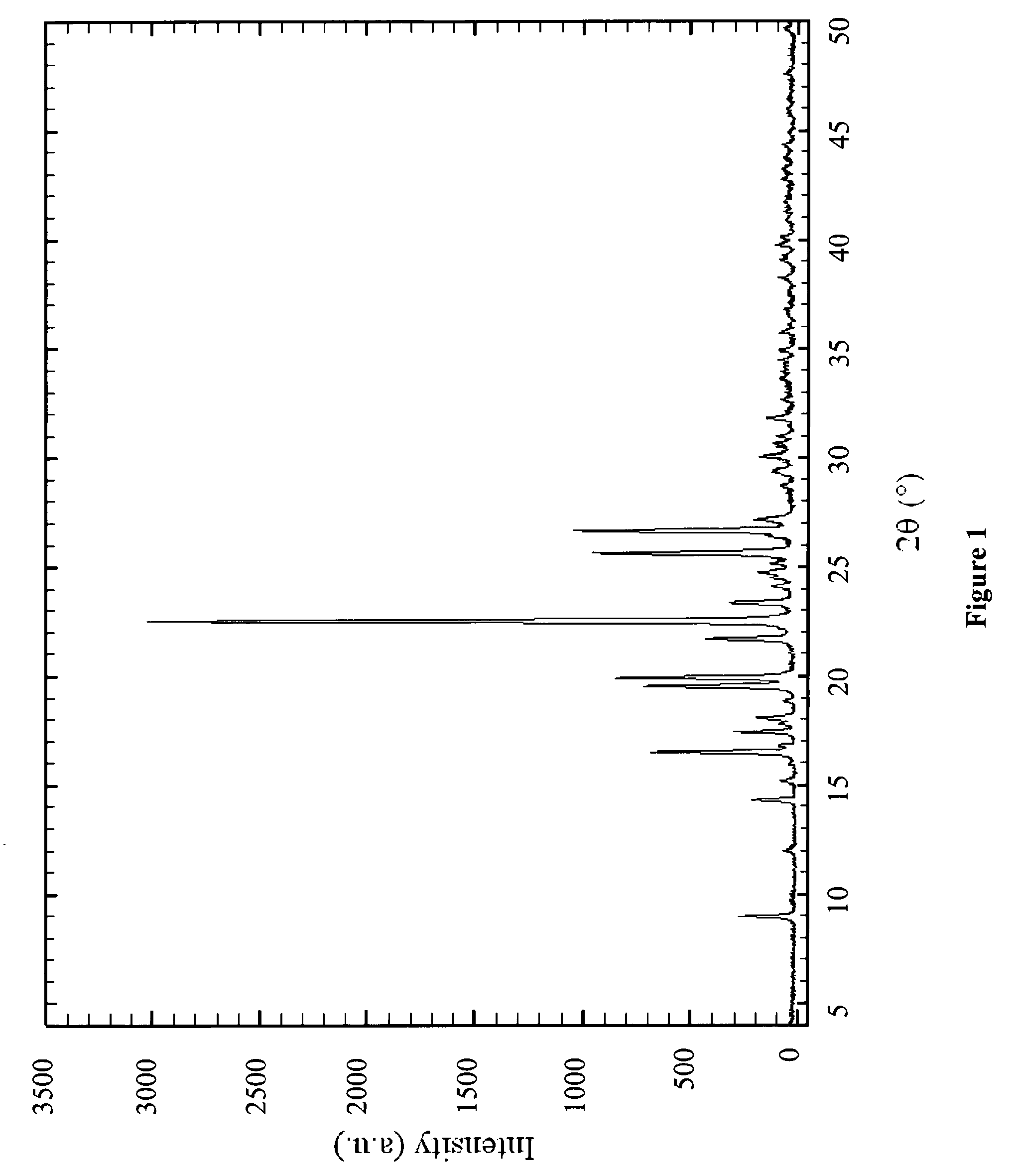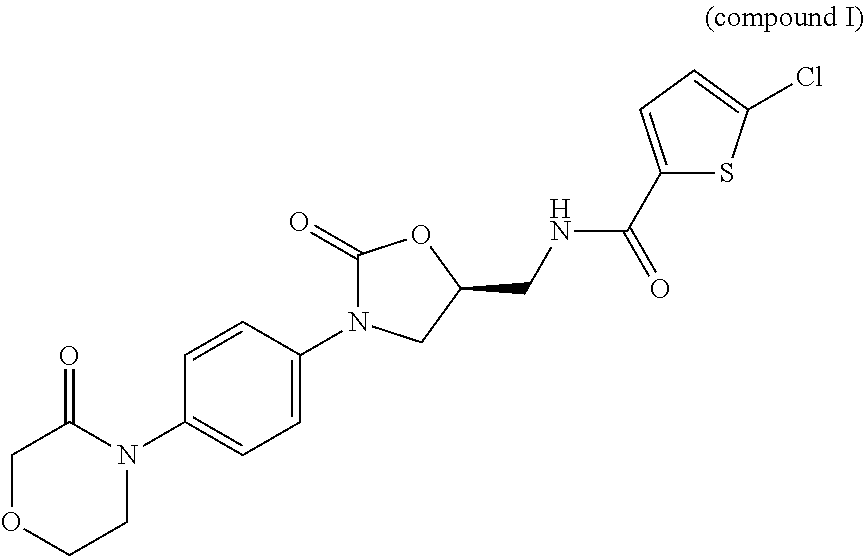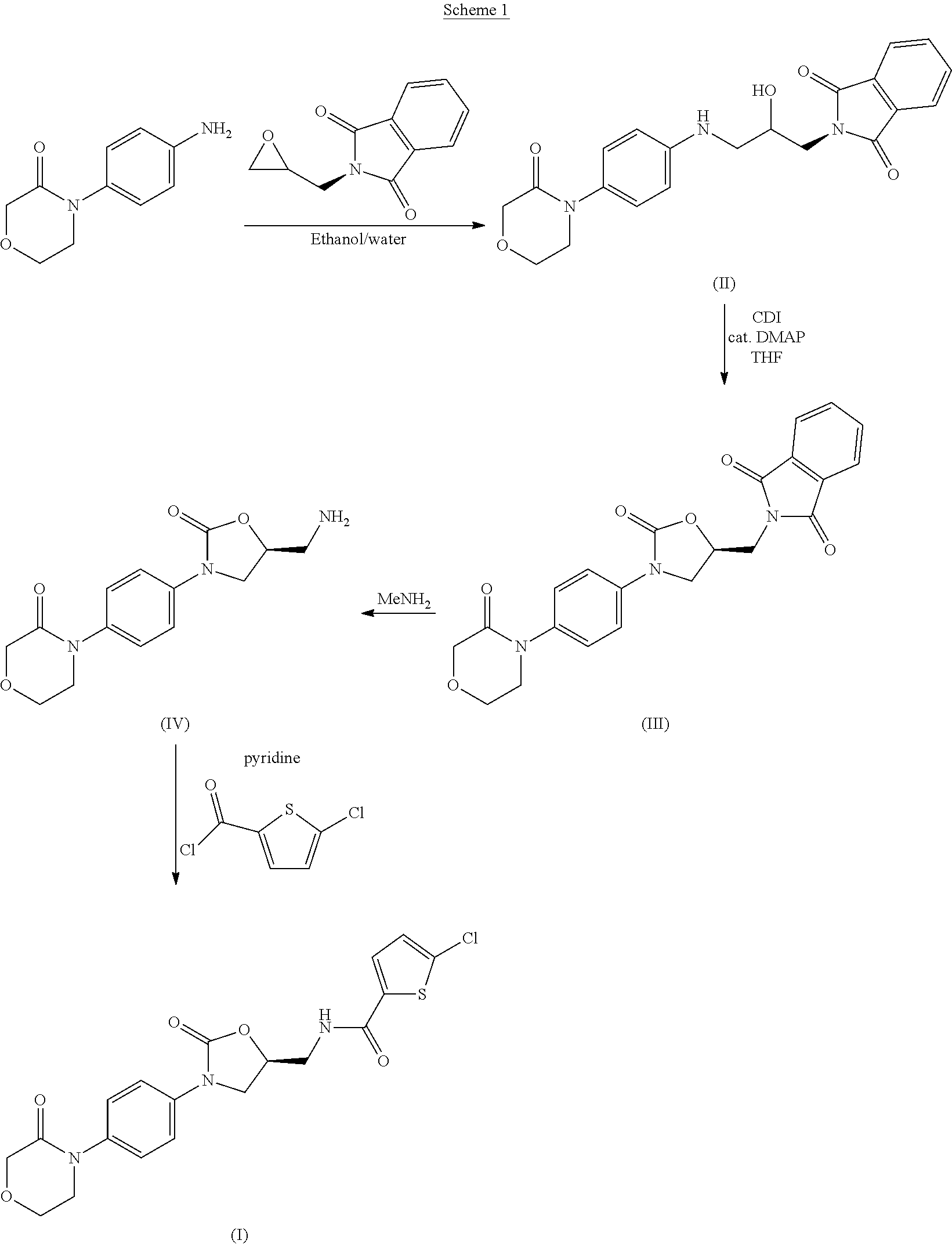Process for Determining the Suitability for Distribution of a Batch of Thiophene-2-Carboxamide Derivative
- Summary
- Abstract
- Description
- Claims
- Application Information
AI Technical Summary
Benefits of technology
Problems solved by technology
Method used
Image
Examples
reference example 1
Synthesis of (S)-4-{4-[5-(aminomethyl)-2-oxo-1,3-oxazolidin-3-yl]phenyl}morpholin-3-one sulfate (2:1) [compound (2:1)]
[0175]26.07 g (61.9 mmol) of (S)-2-({2-oxo-3-[4-(3-oxomorpholin-4-yl)phenyl]-1,3-oxazolidin-5-yl}methyl)-1H-isoindole-1,3(2H)-dione (compound III, obtained from compound II following the process disclosed in the '823 patent) were suspended in 196 mL of ethanol. 24.0 mL (278.4 mmol) of 40% w / w aqueous methylamine were added to the suspension, and the resulting mixture was heated to 60-65° C. and maintained at this temperature for about 2.5 hours. The content of unreacted compound III was checked to be below 5% by TLC. At this point, 75.1 g (178.2 mmol) of 20% w / w aqueous sulfuric acid were added over the reaction mixture while keeping the temperature above 60° C. Precipitation was observed during the addition. The resulting suspension was heated to 70-75° C. and stirred at this temperature for about 1 hour, then cooled down to 20-25° C. and stirred at this temperature...
reference example 2
Synthesis of 5-chlorothiophene-2-carbonyl chloride
[0176]10.6 g (65.2 mmol) of 5-chlorothiophene-2-carboxylic acid were suspended in 31.8 mL of toluene. The suspension was heated to 75-80° C., and 5.7 mL (78.2 mmol) of thionyl chloride were added dropwise to the stirred suspension while keeping the temperature at 75-80° C. The addition vessel was rinsed with 3.2 mL of toluene. The resulting clear, deep orange solution was stirred for about 30 minutes at 75-80° C., and then heated to reflux for about 30 minutes. At this point, 42.4 mL of toluene were added to the stirred solution, and the resulting mixture was concentrated by distilling off 45.6 mL of toluene under vacuum without exceeding 65° C., to give an orange solution of 5-chlorothiophene-2-carbonyl chloride in toluene, which was used directly in the next step of the synthesis.
reference example 3
Synthesis of (S)-4-{4-[5-(aminomethyl)-2-oxo-1,3-oxazolidin-3-yl]phenyl}morpholin-3-one hydrochloride (compound IV.hydrochloride)
[0177]26.00 g (79.3 mmol) of (S)-2-({2-oxo-3-[4-(3-oxomorpholin-4-yl)phenyl]-1,3-oxazolidin-5-yl}methyl)-1H-isoindole-1,3(2H)-dione (compound III, obtained from compound II following the process disclosed in the '823 patent) were suspended in 95.0 mL of ethanol. 21.1 mL (271.6 mmol) of 40% w / w aqueous methylamine were added to the suspension, and the resulting mixture was heated to 60-63° C. and maintained at this temperature for about 2 hours. The content of unreacted compound III was checked to be below 5% by TLC. After cooling to 55-60° C., a total of 31.45 g (172.3 mmol) of 20% w / w aqueous hydrochloric acid were added over the reaction mixture until the pH was 2.65. Precipitation was observed during the addition. The resulting suspension was cooled down to 20° C. and subsequently filtered. The collected solid was washed with 15.0 mL of methanol to give...
PUM
 Login to View More
Login to View More Abstract
Description
Claims
Application Information
 Login to View More
Login to View More - R&D
- Intellectual Property
- Life Sciences
- Materials
- Tech Scout
- Unparalleled Data Quality
- Higher Quality Content
- 60% Fewer Hallucinations
Browse by: Latest US Patents, China's latest patents, Technical Efficacy Thesaurus, Application Domain, Technology Topic, Popular Technical Reports.
© 2025 PatSnap. All rights reserved.Legal|Privacy policy|Modern Slavery Act Transparency Statement|Sitemap|About US| Contact US: help@patsnap.com



